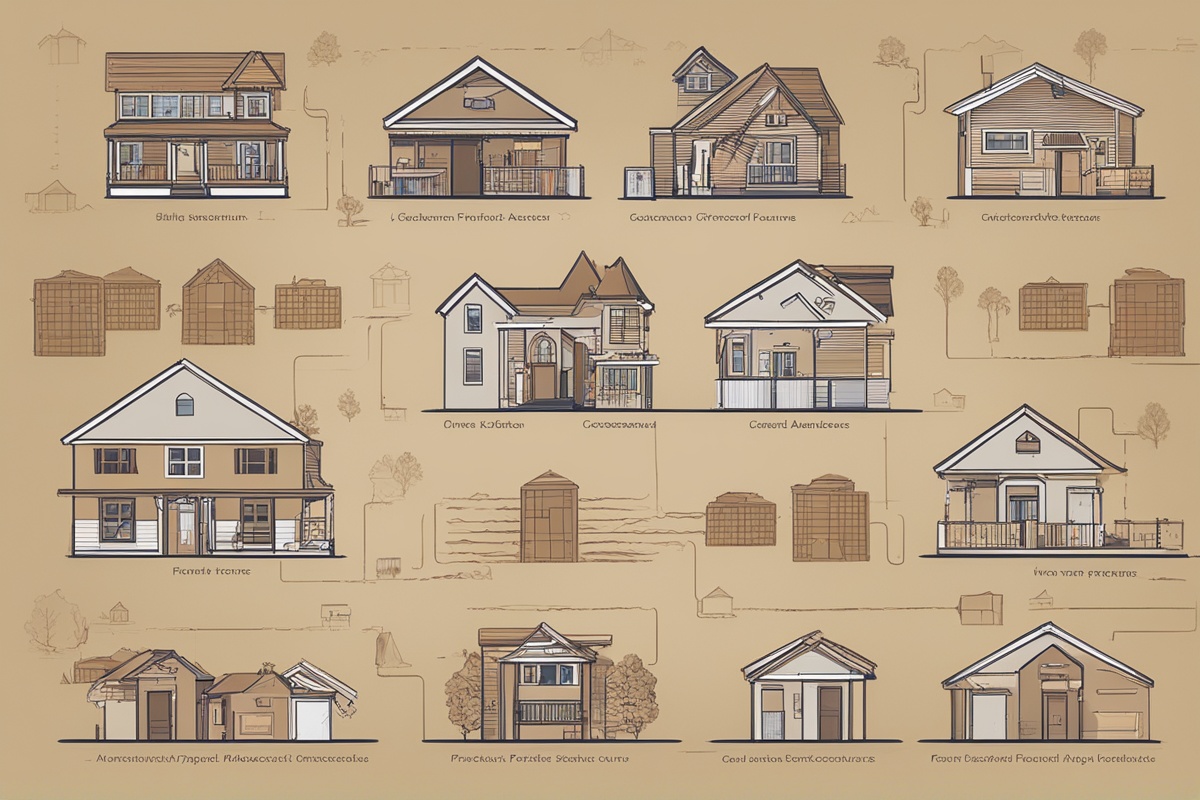Foreclosure is a distressing process that many homeowners face when they are unable to meet their mortgage obligations. It represents a legal mechanism by which lenders reclaim properties due to non-payment, often leading to significant financial and emotional consequences for the borrower. Understanding the common pathways to property loss is critical for homeowners who want to avoid foreclosure or mitigate its impact. This post explores the various types of foreclosure and the typical routes through which individuals lose their homes, offering insights into prevention and resolution strategies.
What Are the Common Pathways to Property Loss?
The journey to property loss through foreclosure often follows predictable patterns, collectively referred to as the common pathways to property loss. These pathways are triggered by financial hardship, poor financial management, or external economic factors. The primary causes include missed mortgage payments, accumulating debt, and failure to communicate with lenders. When payments are missed for an extended period—typically 90 to 120 days—lenders initiate foreclosure proceedings to recover their investment. This process can vary depending on the state and type of foreclosure, but the end result is often the same: the homeowner loses their property.
Understanding these pathways is the first step in preventing foreclosure. Homeowners must recognize warning signs, such as late payment notices or increasing interest rates on adjustable-rate mortgages, and take proactive steps to address them. For more information on recognizing early signs of financial distress, check out our detailed guide on Financial Distress Warning Signs.
Judicial Foreclosure: A Court-Driven Path to Property Loss
Judicial foreclosure is one of the most common pathways to property loss in states that require court involvement. In this process, the lender files a lawsuit against the borrower to obtain a court order to foreclose on the property. This type of foreclosure often takes longer due to legal proceedings, providing homeowners with additional time to negotiate or seek alternatives like loan modifications. However, if the borrower fails to respond or resolve the debt, the court will authorize the sale of the property, typically through a public auction.
This pathway is prevalent in states like Florida and New York, where strict regulations govern the foreclosure process. Homeowners facing judicial foreclosure should seek legal advice to understand their rights. For more on legal protections during foreclosure, see our post on Homeowner Legal Rights in Foreclosure.
Non-Judicial Foreclosure: A Faster Route to Losing Property
Non-judicial foreclosure represents another of the common pathways to property loss, often occurring more rapidly than judicial foreclosure. In states like California and Texas, lenders can foreclose without court intervention if the mortgage agreement includes a “power of sale” clause. This clause allows the lender to sell the property directly after providing notice to the borrower, typically within a shorter timeframe than judicial processes.
The speed of non-judicial foreclosure leaves homeowners with limited time to act. Once the notice of default is issued, the borrower may have only 30 to 120 days before the property is auctioned. This makes it crucial to act quickly by contacting the lender or exploring options like short sales. Learn more about short sales as an alternative in our article on Short Sale vs. Foreclosure.
Strict Foreclosure: A Rare but Direct Path to Loss
Strict foreclosure is a less common but still significant pathway among the common pathways to property loss. Used in a handful of states like Connecticut and Vermont, strict foreclosure does not involve a public sale. Instead, if the borrower fails to pay the debt within a court-specified period, the lender gains direct ownership of the property. There is no opportunity for the homeowner to redeem the property after the deadline passes, making this an especially harsh process.
While rare, strict foreclosure underscores the importance of understanding state-specific laws. Homeowners in affected states should prioritize immediate action to avoid losing their property outright. For a broader look at state-specific foreclosure laws, refer to our resource on State-Specific Foreclosure Laws.
Deed in Lieu of Foreclosure: Voluntary Property Surrender
Another of the common pathways to property loss is through a deed in lieu of foreclosure. This process involves the homeowner voluntarily transferring ownership of the property to the lender to avoid formal foreclosure proceedings. While this option can minimize damage to the borrower’s credit score compared to a full foreclosure, it still results in the loss of the home.
A deed in lieu of foreclosure may be a viable option for those who cannot sell their home or qualify for other relief programs. However, it requires lender approval and may come with tax implications. Homeowners considering this route should consult with a financial advisor or attorney. For additional guidance, explore our article on Alternatives to Foreclosure.
Preventing Property Loss: Breaking the Cycle
While the common pathways to property loss can seem inevitable, there are strategies to avoid foreclosure. Communication with lenders is key—many offer hardship programs, loan modifications, or forbearance agreements to help borrowers get back on track. Additionally, government programs like the Home Affordable Modification Program (HAMP) or local housing counseling services can provide support.
Budgeting and financial planning are also essential to prevent missed payments from snowballing into foreclosure. Homeowners should prioritize mortgage payments, reduce unnecessary expenses, and build an emergency fund to weather financial storms. Finally, selling the property before foreclosure through a short sale or traditional sale can preserve some equity and avoid the worst outcomes of property loss.
Disclaimer: The information provided in this article is for general informational purposes only and should not be considered legal or financial advice. Foreclosure laws and processes vary by state and individual circumstances. We strongly recommend consulting with a qualified attorney, financial advisor, or housing counselor to address your specific situation before making any decisions regarding foreclosure or property loss.
References
- Consumer Financial Protection Bureau – What is Foreclosure?
- U.S. Department of Housing and Urban Development – Avoiding Foreclosure
- Nolo – What is Judicial Foreclosure?
- Federal Reserve – Foreclosure Resources
- Internal Revenue Service – Tax Consequences of Foreclosure
This content is for informational purposes only and not a substitute for professional advice.





